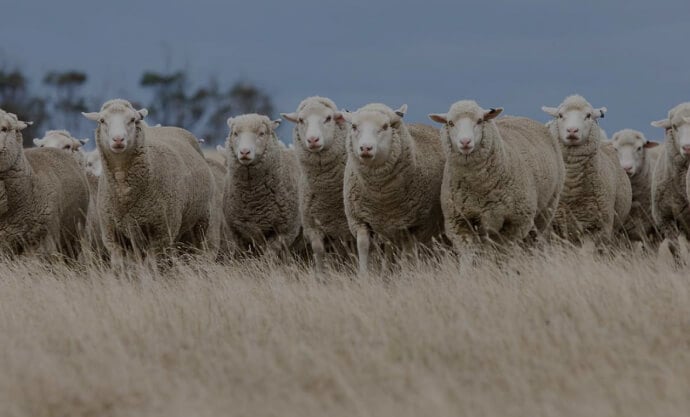Australian cattle and sheep producers are recognised around the world for their animal husbandry and farm management techniques.
The Australian livestock industry takes pride in its genetics and is at the forefront of technological advancements in livestock production efficiency. Australian farmers are also highly progressive in the areas of farm and pasture improvement and water management. Our industry is focused on the highest possible food safety standards with traceability and quality assurance systems through the supply chain; and is built largely by family owned producers committed to delivering world-class beef and lamb.
Beef
Australia produces 3% of the world’s beef supply and is the third largest beef exporter in the world. Beef is produced in every state and territory in Australia however, nearly 50% of the national herd is located in Queensland.
Around 97% of Australia’s 28 million cattle are located on pasture based cattle properties and stations. The Australian beef industry is broadly grouped into northern and southern production areas.
Northern Production
Northern production is characterised by a relatively small number of large properties with high cattle numbers. The dominant cattle breeds are Bos Indicus (eg Brahman) or Bos Indicus cross (eg Droughtmaster) which are better suited to the harsh environmental conditions and ticks.
They are a natural fit for humid, tropical regions like northern Australia and generally have a larger frame and longer legs to easily cover large areas to find food and water. Bos Indicus cattle can be distinguished by a hump on their back that stores fat for tough times. They also have large floppy ears and saggy skin which helps keep them cool.
COMMON BREEDS INCLUDE
- Brahman
- Broughtmaster
- Santa Gertrudis
- Brangus (a cross of Angus and Brahman)
- Braford (a cross of Hereford and Brahman)
Southern Production
Southern production is characterised by a large number of smaller properties which have lower cattle numbers. The dominant cattle breeds are Bos Taurus (eg Angus or Hereford) which are better suited to the more temperate environmental conditions. Often referred to as ‘British breeds’ they prefer the more moderate climates of Southern Australia.
They have thicker coats and a smaller frame, mature more quickly and grow muscle bulk more rapidly than their Bos Indicus relatives. Arguably the best known Bos Taurus breed is the Angus, which originates from Scotland.
COMMON BREEDS INCLUDE
- Angus
- Hereford
- Shorthorn
- Charolais
- Simmental
- Murray Grey
WAGYU
Wagyu is a Japanese breed of cattle also classified as Bos Taurus. Australia now has the largest wagyu heard outside Japan. Traditionally, wagyu are raised on pasture and then spend a considerable amount of time in feedlots – from 300 – 600 days.
Wagyu is unsurpassed for its marbling which results in tender and juicy beef with rich texture and flavour. Wagyu tends to have a softer fat composition and a finer meat texture than other beef.
Goat
Australia, goat production can generally be grouped into two key categories - rangeland and farmed. Rangeland goats (also known as unmanaged, bush or wild goats) are a combined breed of goats which have adapted to live in Australia's low rainfall, often arid rangelands. The majority are wild harvested for export however in recent years a growing number of producers are domesticating these goats in extensive, rangeland environments and managing them as astable component of their businesses.
Farmed goats began to elevate in 1994 with the introduction of the South African Boer breed. Boer goats are renowned for the quality of their meat, rather than milk or hair and have a fast growth rate and solid muscle bulk. Boer goats were bred with Australian domestic herds to produce an animal suited to the Australian conditions. Thanks to this blending of breeds, Australian goat meat has become less of a seasonal commodity and is now available at most times of the year.
Lamb
Australia is the world’s largest exporter of sheep meat and accounts for around 6.7% of global sheep meat production. In Australia, sheep are produced in a wide range of climates from the arid and semi-arid parts of the inland region to the high rainfall areas of New South Wales, Victoria, South Australia and Tasmania and the southwest corner of Western Australia. NSW is the largest producer accounting for 26 million of the national flock.
All Australian sheep are raised on pasture with the significant majority finished on pasture. A very small proportion of sheep farmers, around 5%, grain finish their lamb to optimise growth.
Veal
Traditions of veal rearing, and veal butchery vary from country to country. Veal in Australia is different from that of Europe and America. Australia has a strict code of animal welfare practices which ensures the animals are reared in the open, in small groups and fed a diet of milk and grass or grain.
